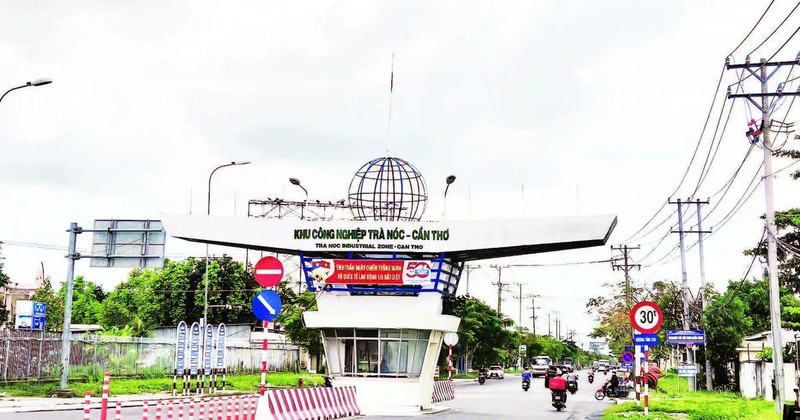Accelerating development of industrial parks
According to the Can Tho Master Plan for the 2021–2030 period, with a vision to 2050, as approved by the prime minister, Can Tho City will vigorously develop industrial parks, considering them a key driving force for economic growth.

In practice, the city’s authorities are actively promoting investment, expanding land reserves, upgrading infrastructure, and issuing numerous incentive policies. However, to realise these goals, Can Tho must still address several existing bottlenecks.
Industrial parks as an engine of growth
At present, Can Tho has seven industrial parks, of which five are operational and two are under construction. Cumulatively, the city’s export processing zones and industrial parks have attracted 257 projects, with total registered investment of 2.256 billion USD; actualised capital has reached approximately 1.295 billion USD, accounting for about 57% of the total registered capital.
Under the approved master plan, Can Tho will establish seven additional industrial parks with a total area exceeding 6,485 hectares, an increase of nearly 6.5 times compared to the current size. New projects, including the VSIP Can Tho Industrial Park, are being promoted to attract both domestic and foreign investors. The city is committed to accompanying investors with preferential mechanisms in taxation, infrastructure, and administrative procedures, thereby fostering a transparent, stable, and attractive investment environment.
Ta Quoc Bao, Deputy General Director of Thanh Binh Phu My Joint Stock Company, remarked: “The city has issued several practical support policies, such as reductions in taxes, electricity and water prices, infrastructure support, and simplified administrative procedures. Enterprises can also access land funds at reasonable costs, which is a significant advantage in the increasingly competitive investment landscape.”
Experts consider Can Tho to be a locality with considerable potential for the development of large-scale, modern industrial parks. Its central location in the Mekong Delta, with convenient connections to neighbouring provinces and the southern key economic region, makes the city a strategic transshipment point for domestic and international goods and materials.
The city’s transport infrastructure is also being gradually upgraded and expanded. Can Tho International Airport, seaports, and interregional road systems create favourable conditions for logistics development. A large, well-trained labour force from regional universities, colleges, and vocational schools, combined with competitive wages, offers significant advantages for investors.
Need for comprehensive and breakthrough solutions
According to economic experts, despite many efforts, Can Tho still faces several challenges that need urgent resolution. Firstly, investment attraction, particularly for large-scale FDI projects, remains modest and not commensurate with the city’s potential. Major multinational corporations and high-tech leading-edge projects have yet to make a significant presence here.
The economic restructuring process towards increasing the share of industry and services is progressing slowly. Key industrial sectors have yet to establish high-value-added value chains. Although investment incentives are in place, they are not yet as attractive as those in Ho Chi Minh City or the provinces of Binh Duong and Dong Nai.
Climate change, especially flooding and saltwater intrusion, poses significant challenges for long-term planning and operation of industrial parks. There is still a shortage of highly skilled labour capable of meeting the demands of technology, precision engineering, and automation sectors.
Pham Duy Tin, Head of the Management Board of Can Tho Export Processing and Industrial Zones, commented: “To create breakthroughs in industrial park development, the city needs to selectively attract high-tech, environmentally friendly projects that use resources efficiently; offer policies to support infrastructure investment in industrial parks; and pay attention to the quality of life for workers.”
One key strategic direction is to increase investment in worker housing and supporting social infrastructure such as schools, kindergartens, recreational areas, and healthcare services to ensure workers’ living conditions in industrial parks. This is a critical factor for businesses in retaining their workforce.
In parallel, the city must continue to strongly reform administrative procedures, simplify investment licensing processes, and improve the effectiveness of investment promotion; focus on investing in regional transport connectivity and logistics infrastructure; and strengthen regional linkages to expand industrial development space, thus creating new momentum and capacity for the cause of industrialisation and modernisation.








